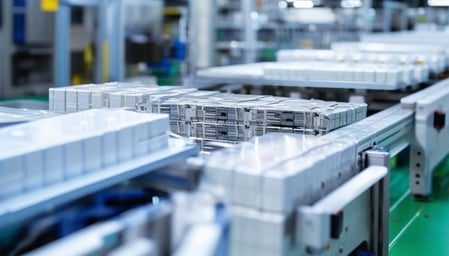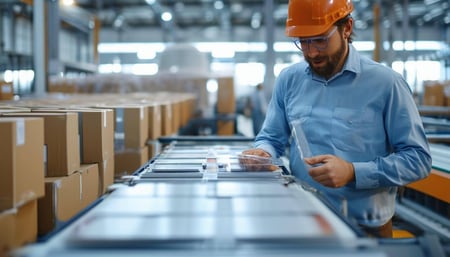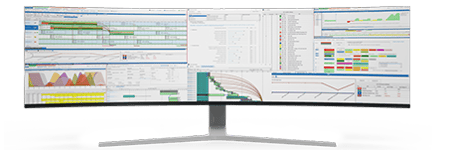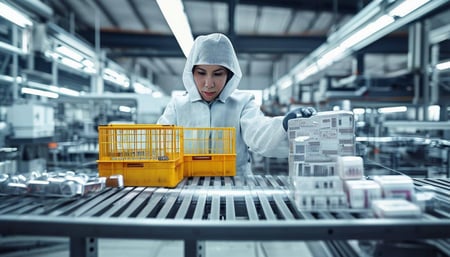Extending the Life of Products and Components
Extending the life of products and components is a critical objective for production planners in packaging manufacturing. As sustainability becomes an ever-more pressing concern, the ability to maximize the lifecycle of packaging materials and components while maintaining production efficiency is no longer just a competitive advantage—it's a necessity. This can result in significant cost savings, reduced waste, and greater supply chain resilience.
For a Production Planner in a packaging manufacturing facility, navigating this challenge requires a deep understanding of how to optimize production processes, manage inventory, and implement advanced planning and scheduling tools like PlanetTogether. In tandem with Enterprise Resource Planning (ERP) systems such as SAP, Oracle, Microsoft Dynamics, Kinaxis, or Aveva, production planners can create an integrated workflow that optimizes the lifecycle of packaging products and components while ensuring that production targets are met.
This blog will explore strategies to extend the lifecycle of packaging materials and components, the role of integration between PlanetTogether and ERP systems, and how these solutions can unlock new levels of efficiency and sustainability.

The Importance of Extending the Life of Packaging Products and Components
The packaging industry is responsible for a large percentage of the waste generated globally. Plastic, paper, and metal packaging materials often end up in landfills or oceans, contributing to environmental degradation. Extending the life of packaging products and components is essential for reducing waste and minimizing the environmental impact of manufacturing.
From a financial standpoint, packaging companies that optimize the lifecycle of their components can see cost reductions in several areas, such as:
Raw material procurement: Buying fewer materials due to optimized usage of existing inventory.
Waste management: Reducing the amount of scrap and defective packaging materials.
Energy costs: More efficient production processes lead to lower energy consumption.
Additionally, extending the lifecycle of materials plays into broader sustainability goals. Many companies are now subject to stricter regulations and customer expectations for sustainable products. Offering packaging solutions with longer life cycles can enhance a company's reputation and marketability while meeting eco-friendly goals.

Challenges in Packaging Manufacturing: A Planner's Perspective
As a production planner in packaging manufacturing, you face several challenges in extending the life of products and components. The need to balance operational efficiency with material longevity presents a complex juggling act that requires precise coordination of resources, machinery, and labor. Some of the key challenges include:
Material Degradation: Packaging materials, especially plastics, can degrade over time, particularly if stored improperly. Managing inventory to use materials within their optimal lifecycle can be a challenge.
Machine Maintenance and Downtime: Machinery used to manufacture packaging components may experience wear and tear, leading to inefficiencies and disruptions that can limit a component’s life cycle.
Demand Fluctuations: Market demand for different types of packaging can vary widely, which can impact inventory management and production planning, leading to overproduction or underutilization of certain materials.
Compliance with Sustainability Initiatives: As regulations surrounding recyclability and sustainability tighten, extending the life of packaging products becomes not just a competitive advantage but a legal obligation.
Navigating these challenges successfully requires a combination of advanced planning tools and data-driven decision-making. This is where the integration of a robust Advanced Planning and Scheduling (APS) system like PlanetTogether with an ERP system becomes invaluable.
![]()

Role of PlanetTogether and ERP Integration in Extending the Life of Products and Components
PlanetTogether is an Advanced Planning and Scheduling (APS) system designed to optimize production planning by leveraging real-time data. It helps production planners make informed decisions based on the current state of machinery, inventory levels, labor availability, and more. However, the full potential of PlanetTogether is realized when integrated with ERP systems such as SAP, Oracle, Microsoft Dynamics, Kinaxis, or Aveva.
How PlanetTogether Enhances Production Planning
PlanetTogether enables packaging manufacturers to optimize production by:
Minimizing waste: Through detailed scheduling and sequencing, PlanetTogether can help minimize material waste. For example, planners can schedule production in a way that ensures packaging materials with shorter shelf lives are used first, reducing the likelihood of expired or unusable components.
Improving machine efficiency: The software’s ability to schedule machine maintenance helps reduce unexpected downtime and ensures that machinery is operating at peak efficiency. This not only extends the life of the machinery but also ensures that packaging materials are handled properly, thereby extending their lifecycle.
Enhanced visibility: Real-time visibility into production operations allows production planners to monitor the lifecycle of components closely and make adjustments as necessary to avoid overproduction or inventory spoilage.
ERP Systems: The Backbone of Manufacturing Operations
While PlanetTogether provides sophisticated scheduling and optimization tools, it is through integration with ERP systems that production planners can fully leverage its capabilities. ERP systems like SAP, Oracle, Microsoft Dynamics, Kinaxis, and Aveva provide comprehensive management of supply chain, inventory, procurement, and other operational functions. Here’s how integration with an ERP system enhances the lifecycle of products and components:
Unified Data Access: When PlanetTogether integrates with an ERP system, it pulls real-time data from inventory, procurement, and production departments. This ensures that the production schedule aligns with material availability, helping prevent both overproduction and material shortages. Real-time data from SAP or Oracle, for example, allows planners to schedule production runs based on precise material shelf life and inventory conditions.
Predictive Analytics: Integrating ERP data with PlanetTogether can enable predictive analytics, allowing planners to forecast future material usage and production demand. This foresight helps to ensure that packaging components are produced in quantities that match demand, avoiding overproduction and wasted materials.
Material Tracking: ERP systems are often equipped with advanced tracking tools that monitor the lifecycle of materials. Integration with PlanetTogether allows these insights to feed directly into the scheduling system, helping planners make informed decisions on when to use materials based on their degradation timeline. For instance, if certain packaging materials are nearing the end of their usable life, the system can prioritize their use to prevent waste.
Sustainability Tracking: Some ERP systems, like SAP and Oracle, have built-in modules for tracking sustainability metrics. When integrated with PlanetTogether, this data allows production planners to create schedules that prioritize sustainability objectives—like minimizing energy use or reducing scrap—while maintaining production efficiency.

Strategies to Extend the Life of Products and Components in Packaging Manufacturing
To fully realize the benefits of extending the lifecycle of packaging components, production planners need to implement a range of strategies, often supported by integrated systems like PlanetTogether and ERP solutions.
Lean Manufacturing Practices
Lean manufacturing focuses on reducing waste at every stage of the production process. In the context of packaging, this might include using digital twins to simulate production scenarios and determine the most efficient use of materials and resources.
Predictive Maintenance
Machinery is integral to the manufacturing of packaging components, and keeping equipment in top condition is key to extending both machine and material lifecycles. Integrated predictive maintenance tools in ERP systems help ensure that equipment receives maintenance when it is needed most, avoiding breakdowns that could lead to wasted materials.
Optimized Inventory Management
By integrating PlanetTogether with ERP systems, packaging manufacturers can closely monitor inventory levels and the condition of materials in storage. This helps ensure that materials are used before they degrade, extending the life of packaging products and reducing waste.
Sustainability Initiatives
Many ERP systems, such as SAP and Oracle, offer sustainability tracking that allows companies to monitor their energy consumption and waste production. By integrating these systems with PlanetTogether, production planners can create schedules that prioritize sustainability objectives, ensuring that both production efficiency and environmental goals are met.
For production planners in packaging manufacturing, the integration of advanced planning systems like PlanetTogether with ERP platforms such as SAP, Oracle, Microsoft Dynamics, Kinaxis, and Aveva offers a powerful way to extend the lifecycle of packaging products and components. These integrations provide real-time data, predictive analytics, and enhanced visibility into every aspect of the production process, enabling planners to make informed decisions that optimize both efficiency and sustainability.
In a world where waste reduction, cost savings, and environmental impact are key drivers of success, extending the life of packaging materials is no longer just a best practice—it’s a critical business strategy. By implementing the strategies discussed in this blog, production planners can help their facilities reduce material waste, improve machine performance, and align production processes with broader sustainability goals.
With the right combination of technology and strategic planning, production planners can position their facilities for long-term success, ensuring that packaging components not only meet current demand but also contribute to a greener, more sustainable future.
Are you ready to take your manufacturing operations to the next level? Contact us today to learn more about how PlanetTogether can help you achieve your goals and drive success in your industry.
Topics: Real-Time Data, PlanetTogether Software, Integrating PlanetTogether, Predictive Analytics and What-If Scenarios, Enhanced Visibility, Accurate Material Tracking, Sustainability Tracking, Packaging Manufacturing, Minimize Waste by Synchronizing Production, Improving Machine Efficiency




















LEAVE A COMMENT